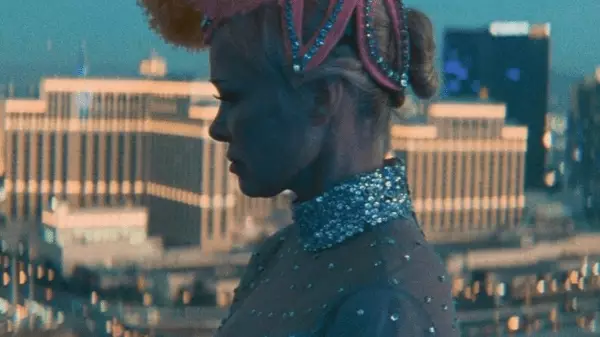Pamela Anderson, a name synonymous with Hollywood glamour and tumult, is poised to reclaim her spotlight with the upcoming film *The Last Showgirl*, directed by Gia Coppola. This project marks a notable return for Anderson, whose journey has faced numerous ups and downs, both personally and professionally. The film represents a critical juncture not just for Anderson but for Hollywood itself, as it illustrates a growing trend of revisiting and reexamining the lives of iconic women in the industry. With a premiere date set for December 13, audiences can look forward to a narrative that delves into the complexities of fame, motherhood, and self-discovery.
Coppola draws fascinating parallels between Anderson and the legendary Marilyn Monroe, suggesting that Anderson embodies a contemporary version of the quintessential blonde bombshell. This comparison invites deeper inquiry into the nature of celebrity and the enduring archetype of the glamorous yet troubled actress. According to Coppola, her creative vision was heavily influenced by personal reflections on women like Munroe and Anderson, both of whom faced the societal pressures of beauty and age within a demanding industry. The film’s protagonist, Shelley, a Vegas dancer, navigates the painful reality of aging in an industry that often values youth over experience. The question of societal expectations looms large in this narrative and serves as a backdrop to Shelley’s struggle for both personal and professional redemption.
In her reflection on the character of Shelley, Coppola emphasizes Anderson’s depth as an artist. Anderson’s assertion that the role was “meant for me” reveals how she resonates with the story on multiple personal levels. As a mother trying to piece together the fragments of her life, she acknowledges the conflict between the public perception of her persona and her inner truths. This dichotomy highlights the struggle many women face in the entertainment industry, where external accolades often overshadow genuine talent and individuality.
The connection between mother and daughter plays a pivotal role in the narrative, with Anderson’s character seeking to reconnect with her daughter Hannah, played by Billie Lourd. This familial dynamic adds emotional gravitas to the story, linking Shelley’s aspirations and challenges directly to the vulnerable yet powerful experiences of motherhood. The title itself, *The Last Showgirl*, evokes imagery of fleeting fame and the often-overlooked emotional toll it takes on those who inhabit these larger-than-life roles.
As Anderson prepares to step back into the limelight, *The Last Showgirl* offers a chance not just for her resurgence but for a broader dialogue about the evolution of female representation in film. It compels audiences to reflect on what it means to be a woman in today’s world, balancing the demands of personal life with professional ambitions. As Coppola’s vision comes to fruition, one hopes that Anderson’s performance as Shelley will challenge prevailing stereotypes and foster a renewed appreciation for the nuanced storytelling that arises when we dare to explore the human condition beyond mere surface appearances.
The film thus promises to be not only a celebration of Anderson’s return but also a pivotal moment for the portrayal of women in Hollywood, inviting audiences to engage with the complexity of their stories.


Leave a Reply